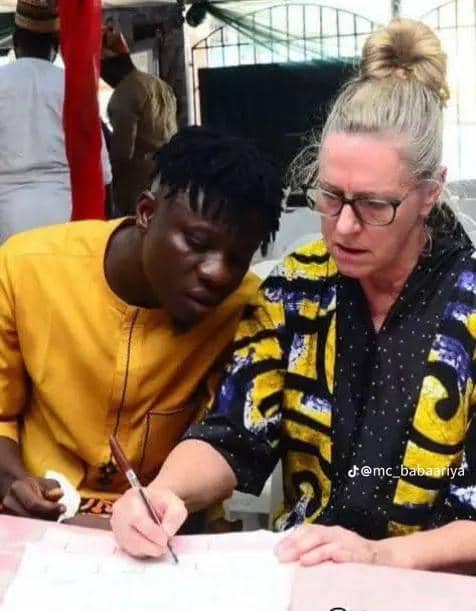How to Get PR in Australia from Africa

Australia remains one of the top destinations for African professionals, students, and skilled workers seeking better career opportunities, a stable economy, and a high quality of life. However, the ultimate goal for many is Permanent Residency (PR)—a status that offers long-term settlement, work rights, healthcare, and eventually, citizenship.
In this comprehensive guide, you’ll discover everything you need to know about how to get PR in Australia from Africa—including eligible visa pathways, requirements, documentation, timelines, and real-life strategies for success.
What Is Australian Permanent Residency?
Australian Permanent Residency (PR) is a long-term immigration status that allows non-citizens to:
- Live and work in Australia indefinitely
- Access public healthcare (Medicare)
- Sponsor eligible family members
- Apply for Australian citizenship after 4 years
- Travel freely in and out of Australia
Can Africans Get PR in Australia?
Absolutely. Thousands of individuals from Nigeria, Ghana, Kenya, South Africa, Egypt, and other African countries gain PR in Australia every year through skilled migration, student visas, family sponsorship, and employer nomination programs.
The most common route for Africans is the General Skilled Migration (GSM) program, followed by Study-to-PR and Employer Sponsorship.
Top 5 PR Pathways for Africans
1. Skilled Independent Visa (Subclass 189)
This is a points-based visa that does not require sponsorship from an employer or state.
Requirements:
- Be under 45 years old
- Have an occupation on the Medium and Long-term Strategic Skills List (MLTSSL)
- Pass a skills assessment
- Score at least 65 points on the immigration points test
- Meet English language requirements (IELTS, PTE, TOEFL)
2. Skilled Nominated Visa (Subclass 190)
State-sponsored permanent visa for skilled professionals who are nominated by an Australian state or territory.
Additional requirements:
- Have an occupation on the relevant state occupation list
- Commit to living in the nominating state for 2 years
3. Skilled Work Regional Visa (Subclass 491)
A temporary visa (5 years) leading to PR, aimed at addressing skill shortages in regional Australia.
Benefits:
- Pathway to PR after 3 years
- Lower points thresholds
- More occupations included
4. Graduate Visa to PR Pathway (Subclass 485 → 190/189/491)
Many African students use the study-to-PR pathway:
- Study a CRICOS-registered course in Australia (minimum 2 years)
- Apply for a Temporary Graduate Visa (485)
- Gain local work experience
- Apply for PR via 189, 190, or 491
5. Employer-Sponsored PR (Subclass 186, 482 → 186)
For Africans with a valid job offer from an Australian employer:
- Temporary Skill Shortage visa (482) allows you to work
- After 2–3 years, transition to PR through Employer Nomination Scheme (ENS 186)
Australia PR Points System Explained
You must score at least 65 points to be eligible, though higher scores (80+) increase your chance of invitation.
| Criteria | Points |
|---|---|
| Age (25–32) | 30 |
| English (IELTS 8) | 20 |
| Work Experience (outside Australia) | 15 |
| Work Experience (inside Australia) | 20 |
| Education (Bachelor’s or higher) | 15–20 |
| Australian Study | 5–10 |
| Partner Skills | 5–10 |
| State Nomination | 5 |
Use the official points calculator on the Australian Immigration website to assess your score.
Step-by-Step Process to Get PR from Africa
Step 1: Check If Your Occupation Is Eligible
Visit the Australian Skilled Occupation List and confirm your job title is included.
Common eligible occupations for Africans include:
- Registered Nurse
- Civil Engineer
- ICT Business Analyst
- Software Developer
- Electrician
- Chef
- Accountant
- Social Worker
- Teacher
Step 2: Take an English Test
Accepted tests include:
- IELTS Academic/General
- PTE Academic
- TOEFL iBT
To maximize points, aim for IELTS 8.0 or PTE 79+.
Step 3: Get a Positive Skills Assessment
Each profession has an assigned assessing body, such as:
- Engineers Australia (for engineers)
- ACS (for ICT professionals)
- ANMAC (for nurses)
Prepare:
- Academic transcripts
- CV
- Proof of work experience
- Passport and ID documents
Step 4: Submit an Expression of Interest (EOI)
Create an account on SkillSelect and lodge your EOI for subclass 189, 190, or 491.
This is not a visa application—you’re registering your interest. If your points are high enough, you may receive an Invitation to Apply (ITA).
Step 5: Receive Invitation to Apply (ITA)
If selected, you’ll be invited to apply for a PR visa. You have 60 days to lodge your full application.
Step 6: Submit PR Visa Application
Provide:
- Identity documents
- Health check and police clearance
- Employment references
- Skills assessment results
- English test results
- Evidence of qualifications
Pay the visa fee (approx. AUD $4,240 for main applicant)
Step 7: Wait for Decision
Processing times vary by visa subclass:
- 189 Visa: 6–9 months
- 190 Visa: 6–12 months
- 491 Visa: 4–10 months
You’ll receive notification by email when a decision is made.
How Much Does It Cost?
| Item | Approx. Cost (AUD) |
|---|---|
| Skills Assessment | $500 – $1,200 |
| English Test | $330 |
| EOI submission | Free |
| Visa Application | $4,240 |
| Medical Exam | $350 |
| Police Certificate | $20 – $100 |
| Agent/Lawyer (optional) | $2,000 – $5,000 |
Can I Apply for PR Without an Agent?
Yes. The Australian immigration process is transparent and can be completed without a migration agent.
However, if your case is complex or time-sensitive, consider working with a MARA-registered migration agent to avoid delays or refusals.
Real-Life Case Study
Name: Blessing (Nigeria)
Background: Bachelor’s in Computer Science, 3 years work experience, IELTS 7.5
Pathway: Applied for Subclass 190 through South Australia
Points: 80
Timeline:
- Skills Assessment (ACS): 6 weeks
- EOI submitted: July
- ITA received: August
- Visa granted: December
Today, Blessing works in Adelaide as a software developer and is on track for Australian citizenship.
Frequently Asked Questions
Q1: Can I apply for PR from outside Australia?
Yes. You can apply directly from Africa if you meet all eligibility criteria.
Q2: Do I need a job offer?
No. For Subclass 189 and many 190 visas, a job offer is not required.
Q3: Is age a big factor?
Yes. Applicants under 33 have the best point advantage.
Q4: Can I bring my family?
Yes. Your spouse and children can be included in your PR application.
Tips to Improve Your PR Chances
- Score higher in English: IELTS 8 or PTE 79 gives you 20 points.
- Apply under an occupation in high demand: E.g., Nurses, Teachers, IT.
- Consider regional migration: 491 visa offers more flexibility.
- Get post-graduate qualifications: Helps increase your points.
- Study in Australia: The 485 visa can lead to PR faster.
Final Thoughts
Getting Permanent Residency in Australia from Africa is not only possible—it’s increasingly common. But success doesn’t happen by chance. It requires planning, documentation, and an understanding of Australia’s immigration system.
Whether you’re a nurse in Kenya, a software developer in Nigeria, or a mechanical engineer in Ghana, there’s a clear and legal pathway to live and work in Australia permanently.
Call to Action
Are you ready to start your PR journey?
- Check if your occupation is eligible on the MLTSSL
- Take your English test and book your skills assessment
- Submit an Expression of Interest on SkillSelect
- Consider state nomination for higher chances
And if you’re unsure, consult with a MARA-registered migration agent for expert guidance.
Your future in Australia starts now.




